Top photo: Courtship display by male (foreground) yellow-bellied slider.
By this time of year I should have seen six, eight, even a dozen female turtles walking along the paths here at the Museum. Each spring, our aquatic turtles leave the water in search of safe places to dig a nest and lay eggs. I’ve only seen three turtles out and about this season. Two of those were relayed to me by Animal Keepers Autumn and Sarah. One was an eastern musk turtle, the other a common snapping turtle. The third turtle, a yellow-bellied slider, was seen by Patrick the Train Driver.
We’ve had many sightings of young sliders moving from their nests down to the water. Those juvenile turtles, though, are from late season nesters of last year. The eggs hatched too late in the season causing the nestlings to overwinter underground in the nest. We see many half dollar-sized juvenile turtles at the Museum in late March or April heading to the Wetlands for the first swims of their lives.
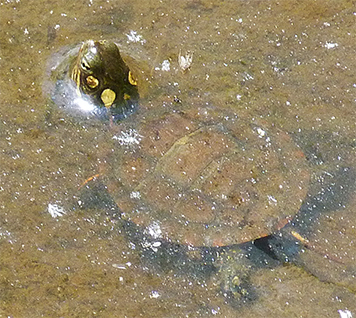
I did, however, discover a nest which had been dug up by a raccoon or fox. The nest was near the outdoor classrooms which has been a regular site for nesting turtles over the past four or five years.
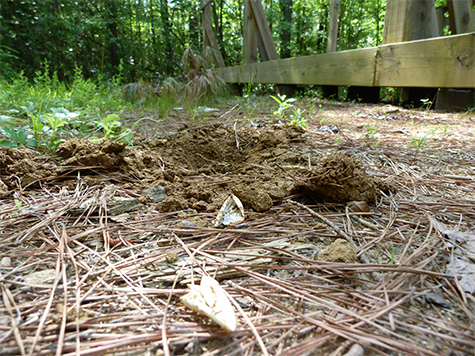
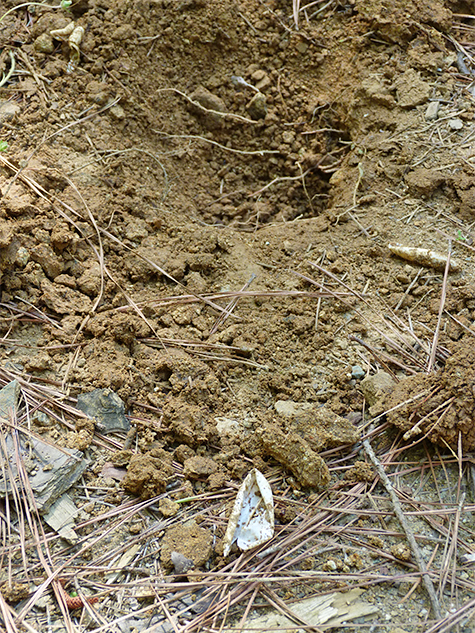
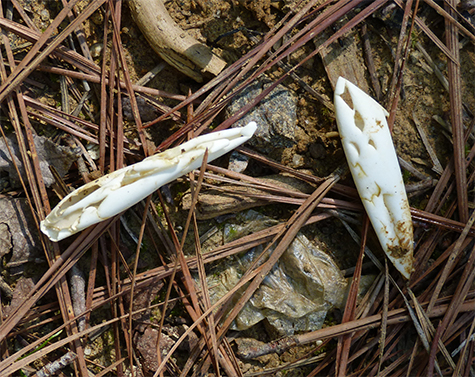
Despite the nest above, our turtles are late getting out of the water this year. I’d have to go back and check the data, but I seem to remember cooler than usual nights back in April, nights in the fifties, keeping our turtles in the water.
I’ve seen many attempts at mating recently, so it shouldn’t be long before we start seeing more females out and about (the eggs have to be fertile to hatch).

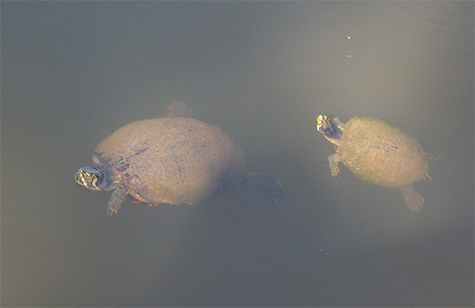
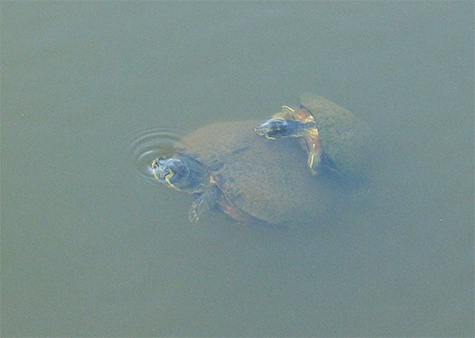
Despite our male’s attempts, the female was more interested in food than mating, she swam off leaving the male behind.
Yesterday I received a report of a painted turtle eyeballing the shoreline of the Wetlands and just this morning (5/21) I got a report from Patrick (Train Conductor/Engineer) of a turtle near the Train Tunnel. Upon investigation, it was a turtle that I’m familiar with, a turtle that I witnessed laying eggs on May 24, 2013 in Catch the Wind. It was 00-80, a yellow-bellied slider that I marked two years ago.
Keep and eye out for turtles as you stroll along the pathways here at the Museum. When you see one, know that it’s more than likely on its way to lay eggs, or on its way back from doing the same.
Dear Greg,
Today at the Museum of Life and Science we saw the tiniest turtle we have ever seen swimming amongst other turtles as we walked along the bridge in the Catch the Wild section. My grandchildren and I were so excited to see such a tiny turtle, but our excitement turned to sadness as we witnessed one of the larger turtles swallow the baby! The children were still talking about this as we said our nighttime prayers…they’re hoping Nugget (that’s what we named the baby turtle) was safely scooped up by its protective mother and released in a safer part of the pond…any chance of that, or do turtles eat their young?
The smaller turtle was probably the young of one of our resident aquatic turtles. The turtles come ashore as early as May to lay eggs in nests dug by themselves for that purpose. Once the turtles lay their eggs, they have no further contact with their young, they lay the eggs and leave them to hatch out and make their way to the water on their own. Some of those turtles should be hatching out now. Depending on the species, the young at the time of hatching are about quarter to half dollar size.
We have five species of turtle in the wetlands. The only species I know of in our wetland that has a gape large enough to gulp down one of those young is a snapping turtle. If you saw a turtle swallow a “tiny” turtle it was most likely a snapper that did the gulping. I doubt it was released.